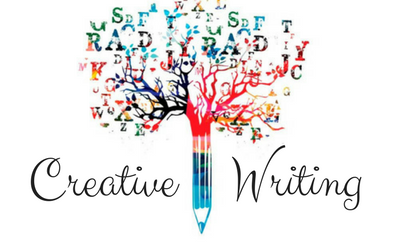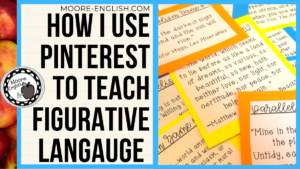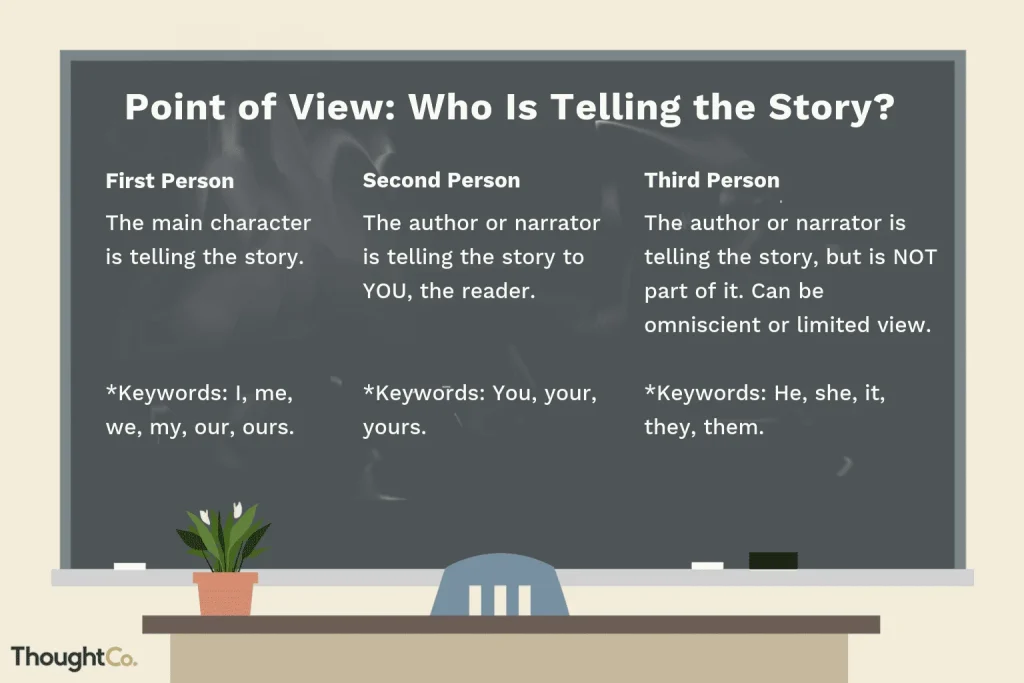Literary devices are tools in use by writers to create an entirely new and focused effect in their writing or to help readers understand their work more deeply. In literary works, they widely help in conveying or clarifying a point in a very creative manner. Authors also use these devices to get readers to connect more strongly with either a story as a whole or specific characters or themes.
So, why is it important to be familiar with various literary devices and terms?
Knowing when different devices are in use, can help you understand the motivation behind the author’s choices. The appropriate literary devices can help you make your ideas more noteworthy, your thoughts clearer, and your writing more influential.
Now that we’ve explored why you should spend time learning literary devices, let’s take look a look at one of the most beautiful and elegant literary device – symbolism !
What Is Symbolism?
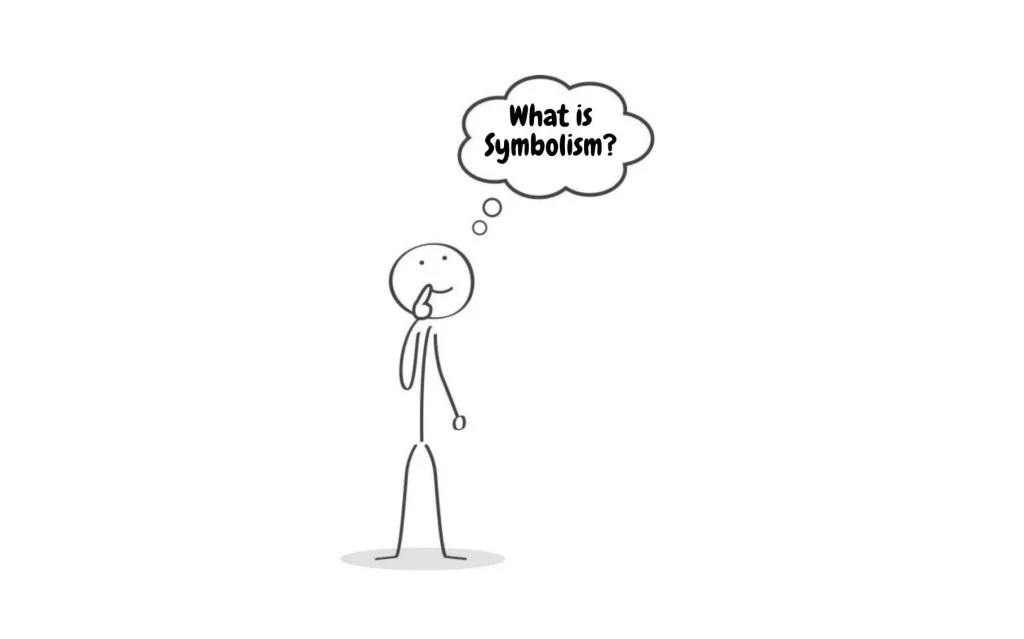
Symbolism refers to the use of an action, an object, or a name to represent a concept or a characteristic. It began as an artistic movement in French poetry in the 19th century to combat realism in favor of romanticism. Writers use symbolism to create a certain mood or emotion in a work of literature. In addition to this, they make texts more interesting and more fun to read.
Symbolism is useful in literature for a number of reasons.
- Help readers understand a difficult issue or idea by giving it a trait they can relate to
- Adds more insight to something by providing a literal example of something non-literal
- Allows writers to convey big ideas in an effectual and aesthetic manner
- Aids in the concealment of a topic that may be too contentious to discuss openly
- Assists readers in visualising complex concepts and following central themes
- As readers go through the process of interpreting the author’s text, it encourages independent thinking
Examples From Everyday Life
Everyday words, objects, and even concepts quite often have more than a single meaning. Certain components of daily life and experience change in meaning and associated significance over time, becoming symbols of something beyond what they actually are.
Here are some common examples of symbolism that you come across in day-to-day life:
- Rainbow– symbolizes hope and promise
- Fire – As a signifier of passion and energy, fire can represent deep emotions such as love or alchemy
- Ice and snow – Ice symbolizes coldness, rigidity, and stillness. Snow, as a “softer” form of ice, frequently represents the rebirth of life.
- Windows – represent opportunity or freedom. However, a closed window can also signify entrapment
- Four-leaf clover– symbolizes good luck or fortune
- White – symbolizes somthing that is good and pure
- Red – symbolizes passion, love or danger
- Green – symbolises hope and immaturity
Types Of Symbolism
Symbolism can take many forms, whether in literature or in normal conversation. Readers are affected differently by various types of symbols. The entire point of symbolism is to ease the reader’s experience with literature. Moreover, knowing the differences between distinct forms of symbolism might help you gain a better understanding of it.
Here are some examples of different types of symbolism:
Simile
A simile is a figurative language device that uses the terms “like” or “as” to compare one object to another. The two things you compare with a simile are clearly distinct. Similes, in contrast to metaphors, are considerably more direct comparisons.
For instance,
- He was as tall as a tree.
- She sings like an angel.
Metaphor
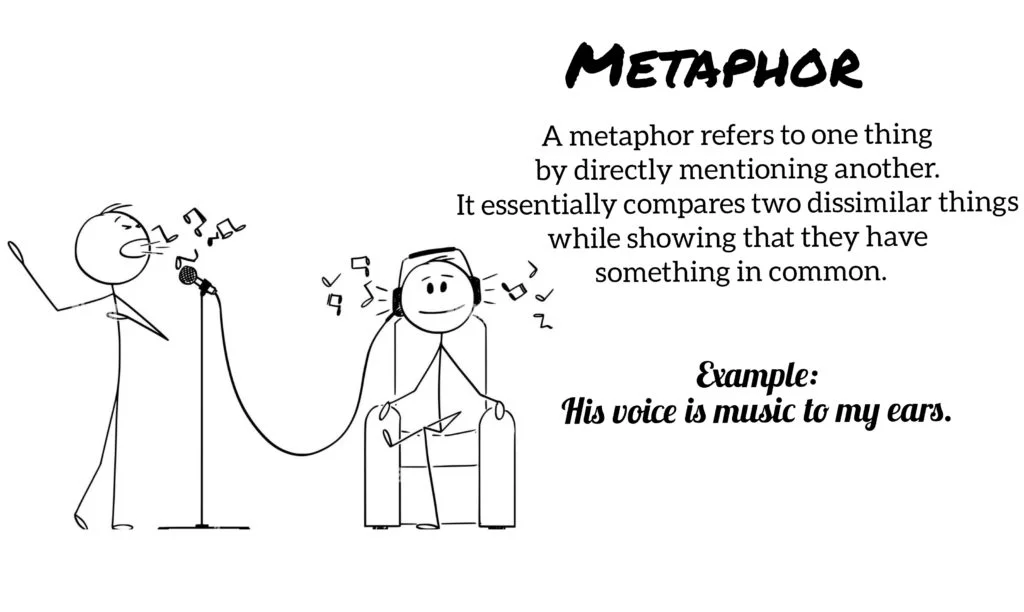
A metaphor alludes to one thing by referencing another. It allows language to be expressed without the usage of “like” or “as” to explicitly identify one thing with another. The same laws of dissimilarity that apply to simile also apply to metaphor, with the directness of metaphor being the primary difference between the two types of figurative language.
As a result, while a metaphor can help clarify things, it can also highlight the similarities between two things or ideas, despite their evident differences.
For instance,
- Mary’s voice is music to my ears.
- Franklin has a heart of gold!
Personification
Personification is a tool in use by writers to help their readers relate to non-human things or objects. This form of symbolism enlivens something that isn’t alive or human with human characteristics.
For instance
- The wind howled in the night.
- Time flies when you’re having fun.
Allegory
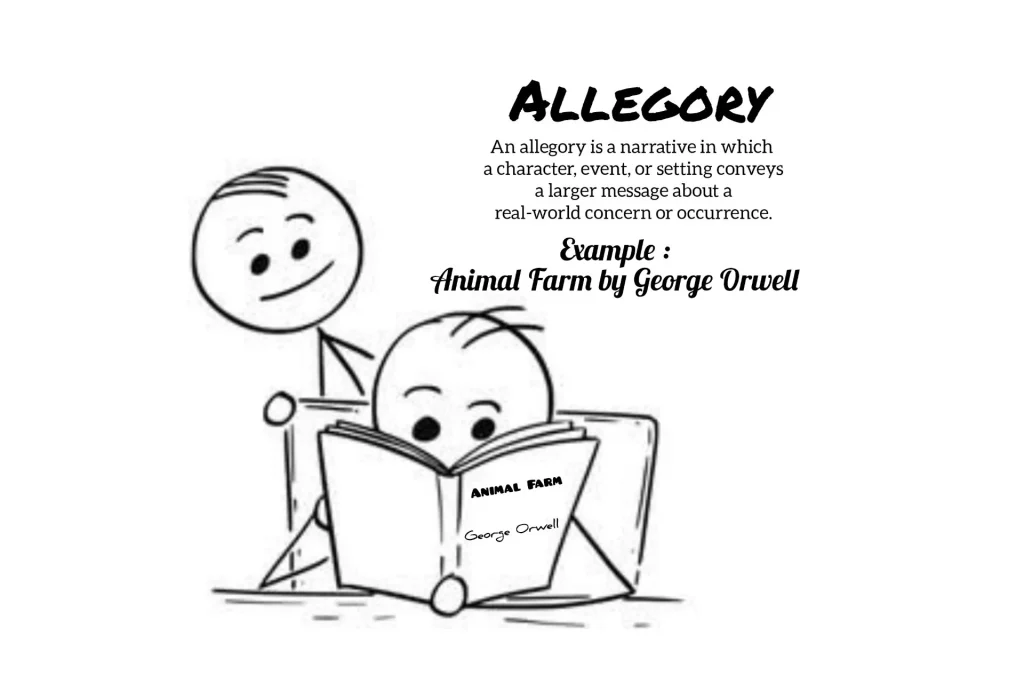
An allegory is a narrative in which a character, event, or setting conveys a larger message about a real-world concern or occurrence. It is essentially an extended metaphor.
For instance,
- George Orwell’s Animal Farm is a political allegory.
- Zootopia is a film steeped in allegories pertaining to tolerance and equality.
Metonymy
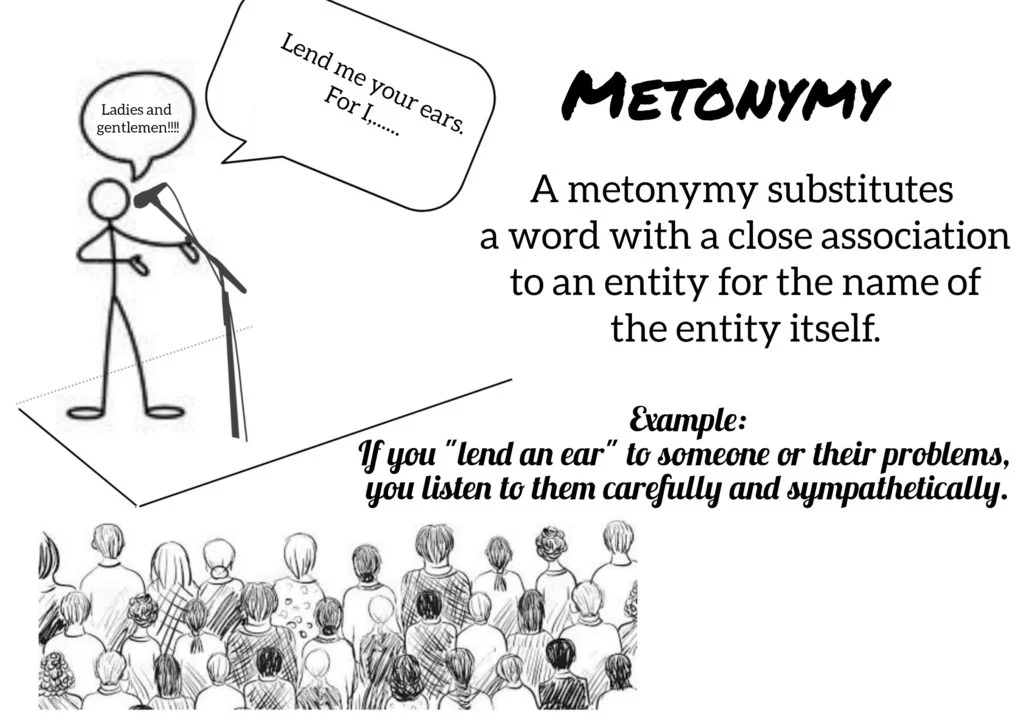
When a word with a strong relationship to an entity is used instead of the entity’s name, it is called a metonymy. Writers use this device to address something more poetically or uniquely.
For instance,
- “Lend me your ears” is a popular metonymy phrase. It means to give someone their attention.
- “Give me a hand” means to give someone help.
Irony

A figure of speech in which the intended meaning contradicts the literal meaning of the words expressed. It helps engage readers and adds another layer to a fictional tale.
For instance,
A child falls into a pool after running away from someone who is throwing a water balloon at him. This is ironic because the child ends up wetter than he would have been had he not run away from the water balloon.
Hyperbole
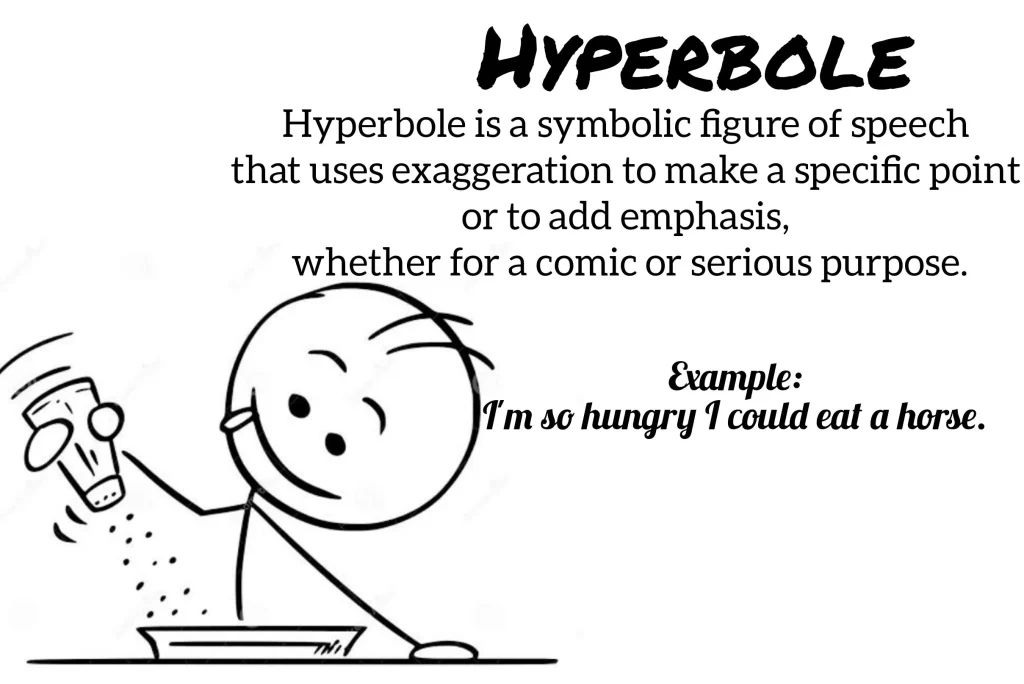
A symbolic figure of speech that uses exaggeration to make a specific point or to add emphasis, whether for a comic or serious purpose. While many authors use hyperboles in his\her works of fiction, many people use hyperboles in their everyday speech as well.
For instance,
- The suitcase weighed a ton.
- I’m so hungry I could eat a horse.
Archetype
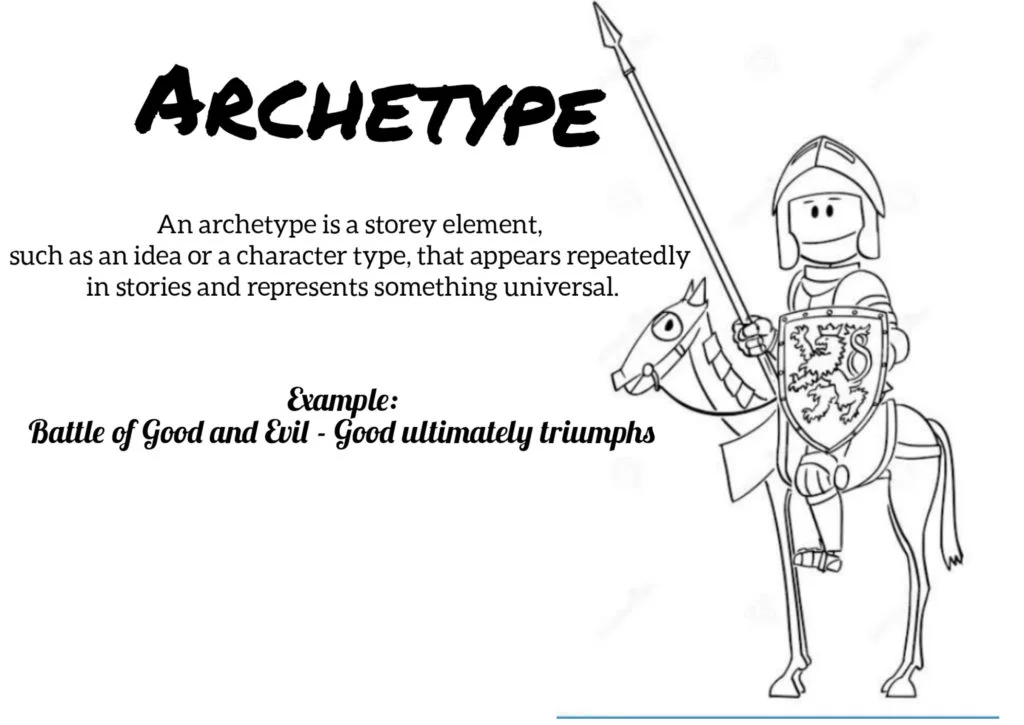
An archetype is a storey element, such as an idea or a character type, that appears repeatedly in stories and represents something universal.
For instance,
- Battle of Good and Evil – Good ultimately triumphs
- Rags to Riches – A character rises from poor luck or station to a higher one
Final Thoughts
Symbolism is perhaps one of the most powerful literary elements known to authors. Much can be stated while hiding behind the symbols that abound in nature and daily life.
Check out the Podium Blog about creative writing to enhance your writing skills. It offers a wide range of suggestions and ideas for bringing out and developing your inner writer.
Why not take a closer look at different elements of poetry? Catch our article on Types of Poetry You Must Know About and don’t forget to checkout our newest article on Why cooking is important for your child?
Share with your friends

